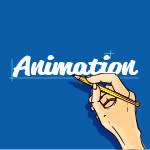‘Scoob!’: Could a New Hanna-Barbera Cinematic Universe Emerge from This Riff on Cartoon Classics?

Click here to read the full article.
With “Scoob!,” Warner Bros. Animation launches a new Hanna-Barbera cinematic universe built around the crime-fighting Mystery Inc. teenage gang and its lovable Great Dane. The plan was to release the franchise’s first CG-animated feature theatrically on May 15, but, of course, the pandemic intervened, so it’s going straight to VOD instead.
Whether or not “Scoob!” taps as large an audience as DreamWorks’ “Trolls World Tour” remains to be seen, but, according to director Tony Cervone, a veteran of the Hanna-Barbera and Looney Tunes home video franchises, it offers nostalgic comfort food for quarantined families. “Sure, I would’ve loved a theater experience, but we’re in a weird time,” he said. “It’s a bummer. But because of that, there’s families at home looking for stuff to watch, and there’s something reaffirming and warm and fuzzy and bright and colorful [about ‘Scoob!’].”
More from IndieWire
It begins with Scooby (Frank Welker, best known as the voice of the original Fred) and Shaggy (Will Forte) bonding as kids and later teaming up with Fred (Zac Efron), Daphne (Amanda Seyfried), and Velma (Gina Rodriguez) on a fateful Halloween in Venice, California. The quartet’s first case to prevent a global “dogpocalypse” features such Hanna-Barbera favorites as superhero Blue Falcon (Mark Wahlberg), his trusty assistants Dynomutt (Ken Jeong) and Dee Dee Sykes (Kiersey Clemons), the villainous Dick Dastardly (Jason Isaacs), and the wacky Captain Caveman (Tracy Morgan).
Five years in the making with Dallas and Montreal-based Reel FX (“The Book of Life”), the “Scoob!” contemporary origin story started out in the spirit of the zany 50-plus year-old cartoon series, and veered off wildly into photo-realism before coming full-circle with an appropriately classical, 2D vibe.
“I think we had to go through that process to [re-imagine] it in 3D,” added Cervone. “We talked a lot about the connection between Scooby and Shaggy, and then we changed our direction in the design. We leaned in on their physical likeness and had them looking at each other more. We built a lot of symmetry in their poses so that one of them was almost an extension of the other. When they ate a piece of food, they did it at the same time and in the same way. And we had to discover that.”
For Reel FX animation supervisor Bill Haller, this was a chance to especially hone in on the cartoony essence of Scooby, accentuating the floppy jowls and ears and going for as much squash-and-stretchy physical fun as he did on “Hotel Transylvania.” Performing draw-overs to get 3D animation to perform more like 2D has become standard industry practice, and it proved useful here as well.
“I was always asking myself, if [Hanna-Barbera animation legend] Irv Spence could do this shot over and on a feature budget, how would he do it?,” Haller said. “That drove us to push it beyond what they could achieve. Scooby had some of that ‘Tom and Jerry’ cartoony style, but we added a lot more tricked-out physics for 3D. And Shaggy was the same way. And I had one of the software guys write a script to add a staggered [effect] anytime they jumped up in the air or got scared. I got this from Tex Avery’s ‘The Ventriloquist Cat’ and all they did with those staggers was animate it straight through and reorder the drawings in a certain format and then played it back. So I ripped it off [and made it work in the computer].”
The hardest part was dealing with the varied styles of this multiverse, which ranged from the naturalism of Fred, Daphne, and Velma, the Batman-like Blue Falcon, and the old school caricaturing of Dastardly. “We had a lot of young animators and Bill and I took them back to animation school in a way,” Cervone said. “Blue Falcon is an obvious nod to Bruce Timm’s ‘Batman’ but also [Max] Fleischer’s Superman, who influenced Bruce’s ‘Batman,’ so we’re all borrowing from the same stuff.”
Haller added that The Captain Hook-like Dastardly was influenced by a combination of Milt Kahl’s Shere Khan (the Bengal tiger voiced by George Sanders in “The Jungle Book”) and Richard Williams’ Zigzag in “The Thief and the Cobbler.” “I studied every Khan pose and realized [Kahl] was a genius, and with Dastardly, we constantly asked if there was a better angle, a better way to display this awesome design. And once we found that, we looked at Zigzag, who had a mouth that just never stopped. The corner would go up like The Grinch. So we did that with Dastardly.”
And for the trippy, VFX-filled action set piece, they had to look no further than “Ghostbusters.” “On a cinematic level, it lives up to what would have been a big screen experience,” Cervone said. But the most important part was emphasizing the inseparability of Scooby and Shaggy and how their friendship becomes threatened by Scooby’s rise in stature as a hero. That alone justified their entire approach to this origin story.
“This movie is really about friendship and what happens when it’s challenged,” added Cervone. “And what happens when you’re separated by adversity. And now with the predicament that we’re in with this pandemic, some of these messages are even stronger. And it’s a time when people need that kind of stuff to watch.”
Best of IndieWire
Sign up for Indiewire's Newsletter. For the latest news, follow us on Facebook, Twitter, and Instagram.


